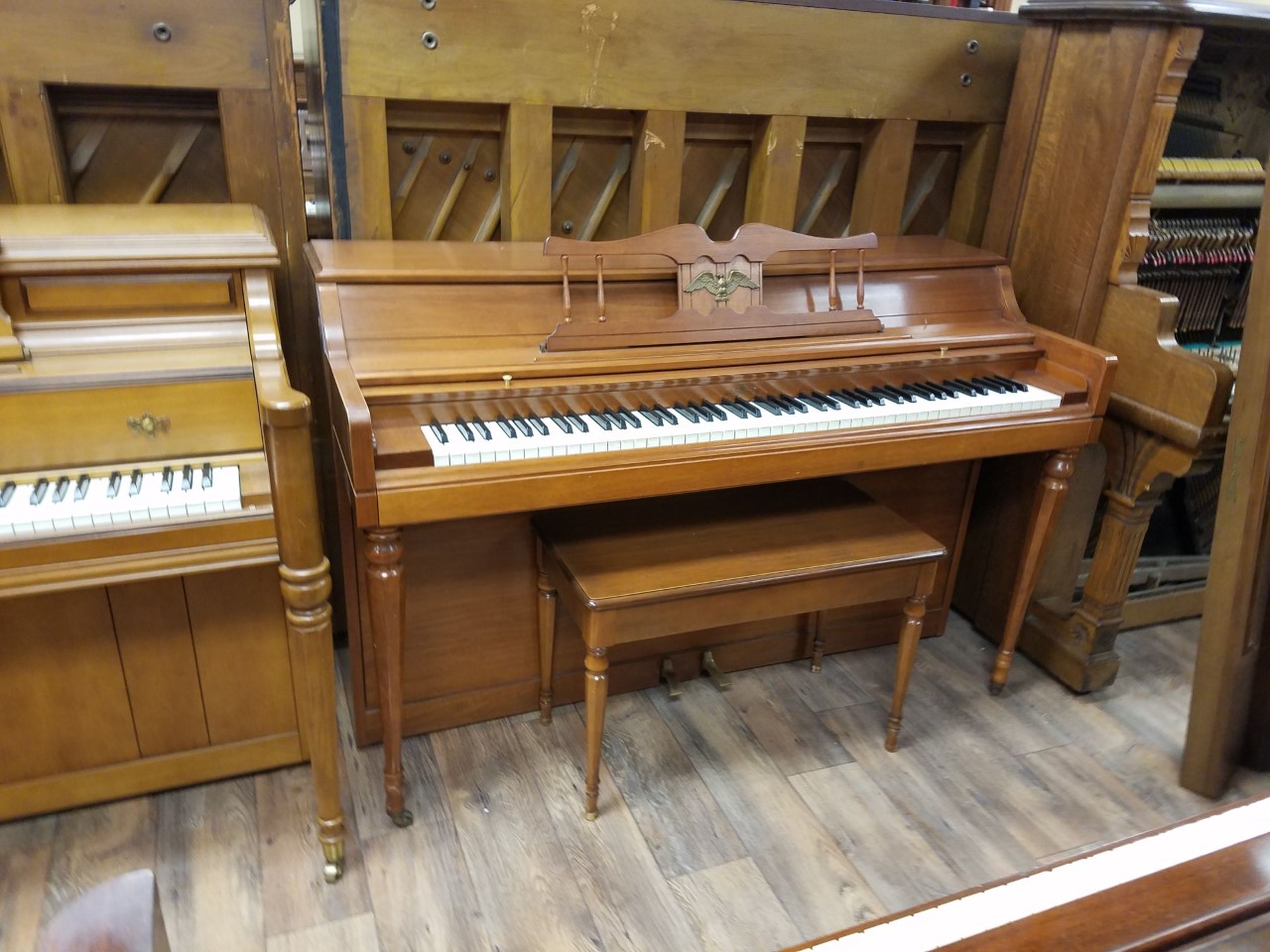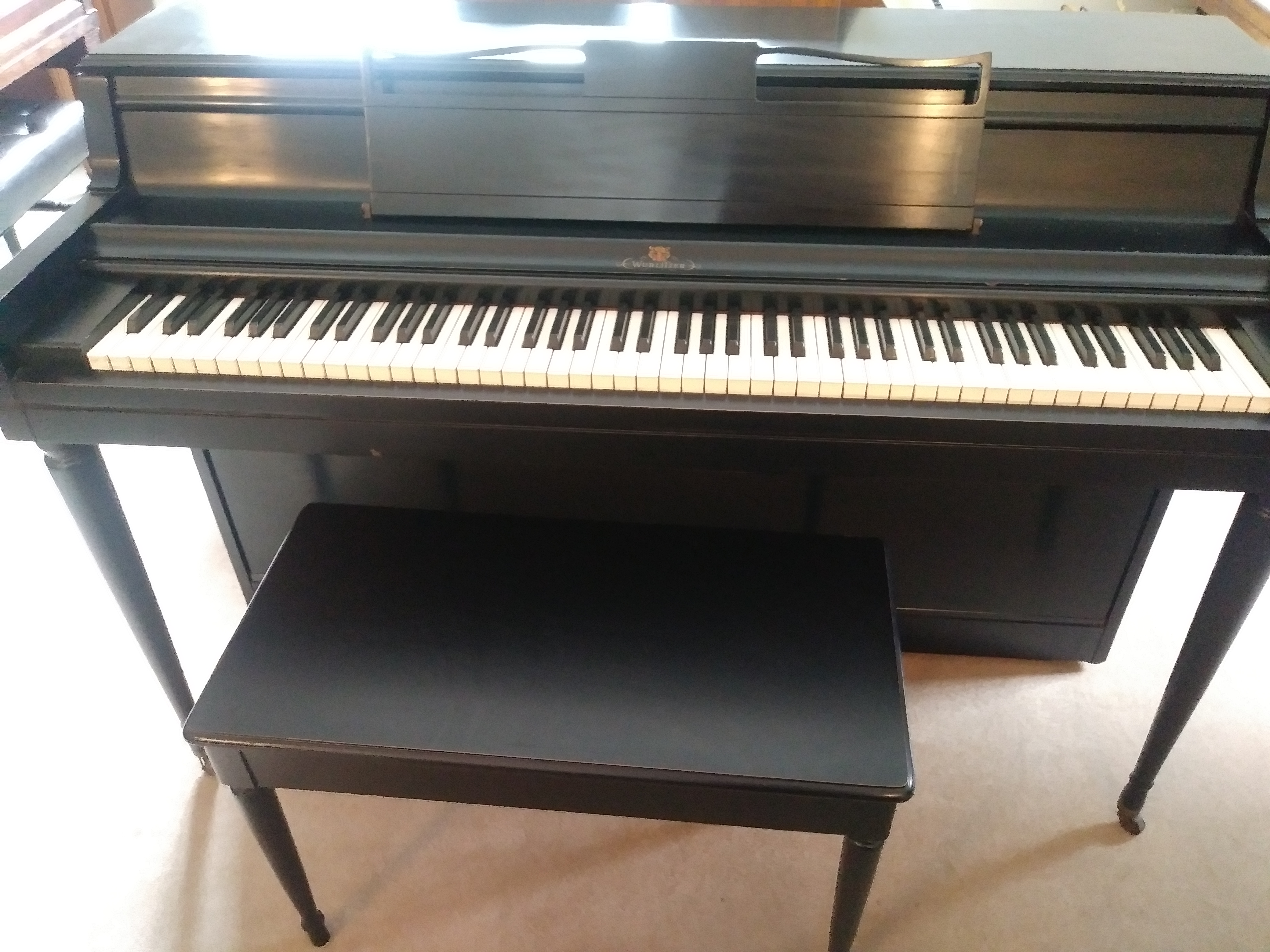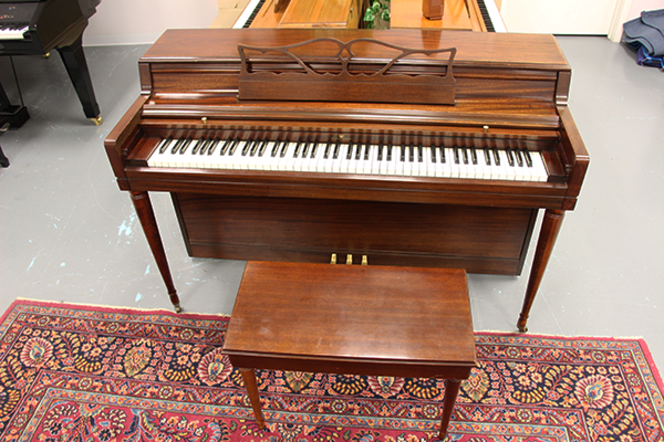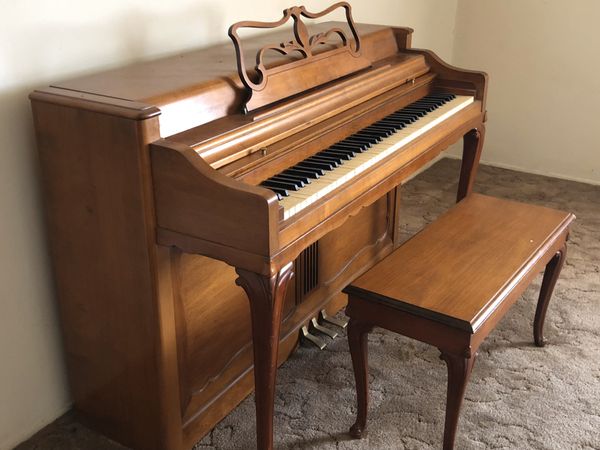
However, the experience of playing the awkward spinet may not be conducive to practice and playing. Some people prefer the spinet when they are uncertain whether to invest in the cost of an upright piano. However, there are not many benefits to mention beyond their price and size. The spinet’s diminutive size is under 40 inches and suits people in smaller apartments and homes. The advantage of the spinet piano is that they are substantially cheaper than their upright counterparts. What Are the Advantages of a Spinet Piano?

The spinet drop action makes the keys relatively light and imprecise, giving students little dynamic control and preventing them from learning correct keyboard practice. The spinet lacks both these qualities making it a poor substitute for an upright. Young players need a piano with a well-tuned sound for ear training and a piano with proper action to develop muscle memory and hand strength. Many parents are tempted to buy the smaller spinets for their kids, but most piano teachers will tell you that the spinet is not a good instrument for beginners. Although these pianos are affordable, they are typically poor musical instruments.Īlthough the spinet is perfect for small homes with budget concerns, they generally make a terrible starter piano. The spinet is also challenging to tune, with the drop action system presenting difficult access. The disadvantages of a spinet piano are poor sound quality and inefficient operation that makes for awkward playing. What Are the Disadvantages of a Spinet Piano? The shortened keys and strings resulted in a poor harmonics range. However, the indirect action of the keys to the strings made it a clumsy and inefficient instrument to operate. The spinet piano was affordable and could fit neatly into smaller homes, making it a popular choice from the 1930s onwards. The drop action operation and shortened keys and strings affected performance and sound quality. The spinet was mass-produced for a society experiencing the effects of the great depression and compromised sound quality for affordability. The typical spinet piano is not good and is known for its poor sound quality.

The indirect action of the spinet makes for a poor playing experience and a ‘tinnier’ sound and harmonics. Upright pianos have superior sound, and the strings are responsive to key pressure. The shortened strings resulted in a limited range of harmony and diminished tonal quality. The shortened piano keys had poor leverage, and thus the player had limited control and sense of connection between the keys and sound. The diminutive size of the spinet compromised the sound considerably, and many spinet players encountered problems with the stickers. The piano keys are not linked directly to the action but instead drive rods that pull up levers that engage the action below the keyboard. The spinet operates by an indirect blow or drop action. Early spinets were highly ornamented, but the popular spinet of the 1930s usually had a lavishly burnished wood finish.Īlthough the spinet appears similar to the console piano in terms of size, the key differences lie within the piano’s workings. The spinet piano is a type of harpsichord typically 36-40 inches high measured from the base to the tallest portion of the piano case. When smaller pianos without compromised sound came on the market, the spinet eventually fell into obscurity.


Alternatively, some experts link the term spinet to the Venetian 17-century inventor Giovanni Spinetti.Īlthough some superior quality spinets do exist, the compromised sound of the ‘drop action’ mechanisms eventually lost the spinet its buying public. The word spinet may have been a reference to the quill-like mechanisms that plucked the piano strings. The word spinet may derive from the Latin term spinae or thorns. The spinet replaced the large and costly harpsichords manufactured in the 17 and 18 centuries, and the etymology of the word spinet has two probable sources. The Spinet piano has its origins as far back as 16th century Italy where it became popular in England and France. These smaller and more cost-effective pianos sacrifice sound for space and are no longer in manufacture. Spinets abound in attics and backrooms across the US where once they were a popular addition to middle-class households. However, these terms are adapted from the spinet piano, a 17th-century harpsichord with shortened keys and drop action operation. The word spinet may refer to various forms of furniture or diminutive objects such as the spinet desk or spinet dressing table.


 0 kommentar(er)
0 kommentar(er)
